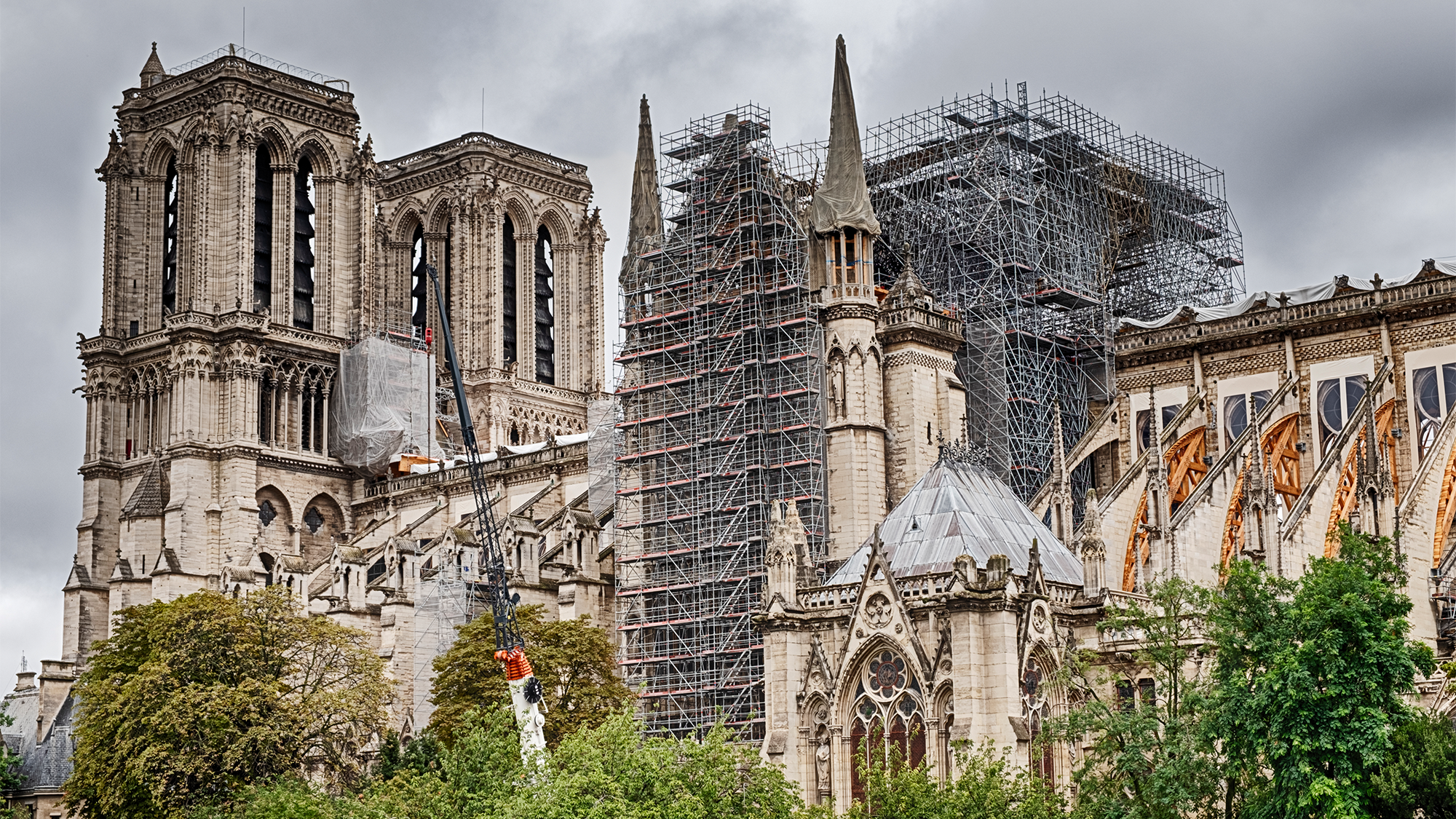

On April 15, 2019, eyes around the world were glued to the news as a massive fire ripped through The Notre-Dame de Paris. The disaster damaged most of the metal and wood in the cathedral’s roof and famous spire, spurring an estimated $865 million restoration. The French landmark is set to open back up to visitors in December 2024.
Investigations into the cathedral’s construction during its renovation found that the 860-year-old building is the first known cathedral of Gothic-style architecture that used iron to bind the stones together when it was initially constructed. The use of iron in this manner was a huge technological advancement for the time and the discovery is detailed in a study published March 15 in the open-access journal PLOS ONE.
[Related: Get a high-tech tour of the long-lost Ironton shipwreck discovered in the Great Lakes.]
When it was built in the middle of the 12th century, Notre Dame was one of the tallest buildings ever built, towering about 104 feet over Paris. Earlier studies suggested that it was able to soar to these heights by combining a number of architectural innovations such as ribbed crossing and thin vaults, but the role that iron played in the cathedral’s initial construction was unclear.
The restoration of the cathedral after the 2019 fire allowed a team to study previously hidden parts of Notre Dame, where they obtained samples of material from 12 iron staples that were used to bind stone together. The staples were in different parts of the building, including the nave aisles, upper walls, and tribunes.
The team studied the samples using radiocarbon dating to estimate how old they were. Microscopic, chemical, and architectural analyses suggest that the iron staples were used during the earliest phases of the cathedral’s construction in the 1160s. This makes it the first building of its type to rely on these iron staples throughout its structure.
Reinforcement of the building’s stones with iron was key to creating the cathedral’s Gothic style, the authors add. Compared with stone architecture used in Roman times, such as the Roman Colosseum, Gothic architecture, which dates back to around the 12th to 16th centuries in Europe, used innovations in ironwork to build structures with more detail and that appear lighter.
“Radiocarbon dating reveals that Notre-Dame de Paris is indisputably the first Gothic cathedral where iron was thought of as a real building material to create a new form of architecture. The medieval builders used several thousand of iron staples throughout its construction,” the authors wrote in a statement.
[Related: Severe droughts are bringing archaeological wonders and historic horrors to the surface.]
These new findings, when paired with other historical and archaeological knowledge from the same time period, could also help deepen the understanding of how iron was traded, circulated, and forged in Paris during the 12th and 13th centuries. Many of the staples in this study appear to have been made by welding pieces of iron from different supply sources.
Further study of these samples could help researchers create a comprehensive database of historical iron producers in the region to confirm these new findings about the iron market in medieval Paris.
